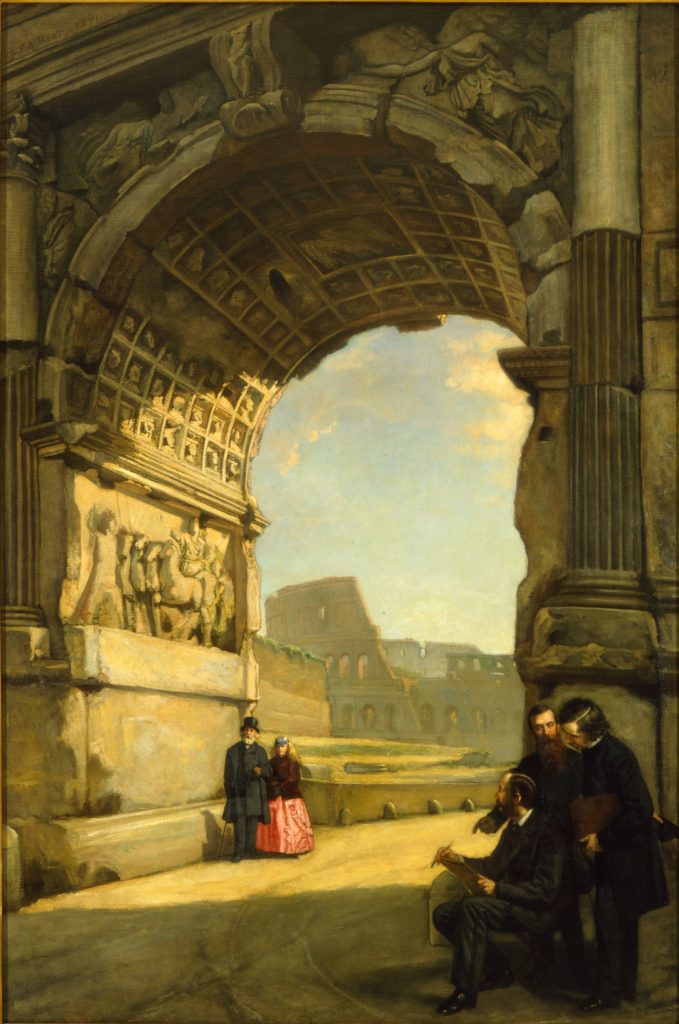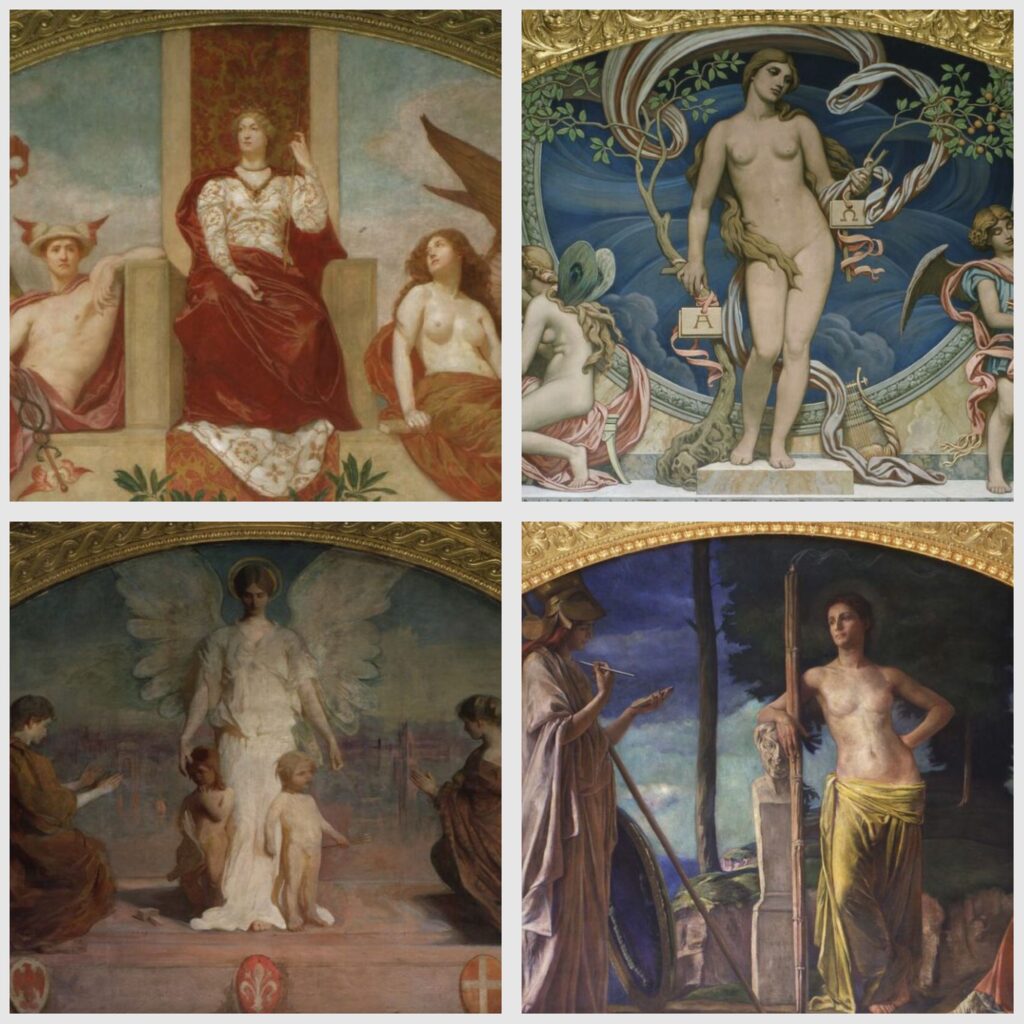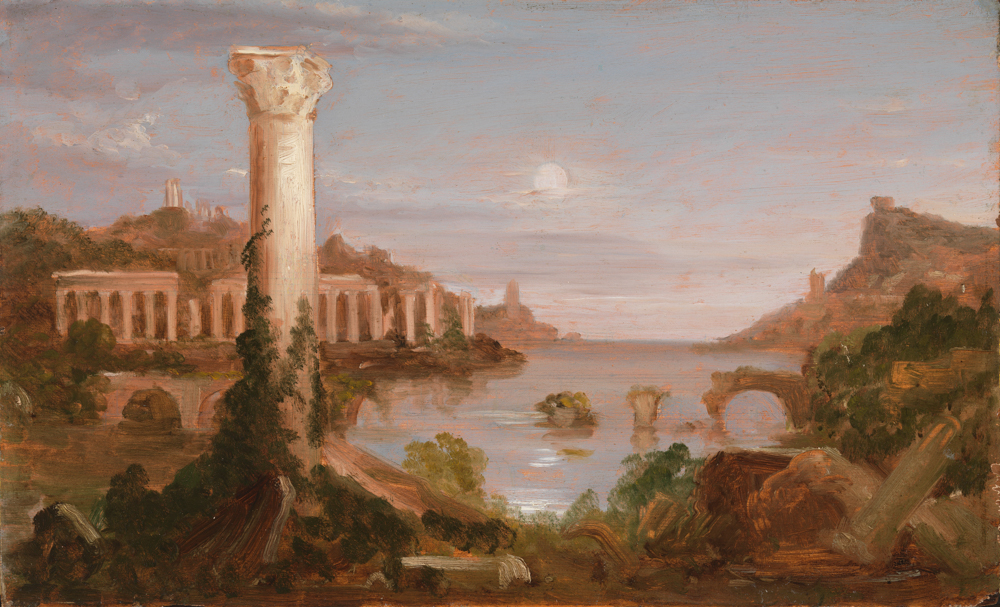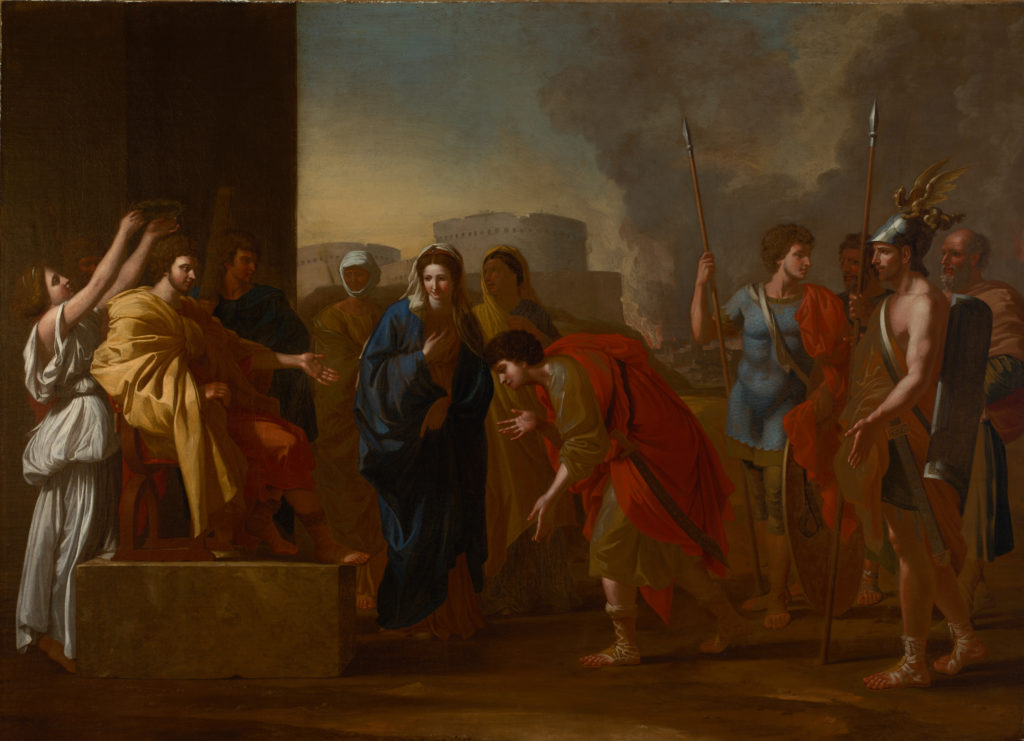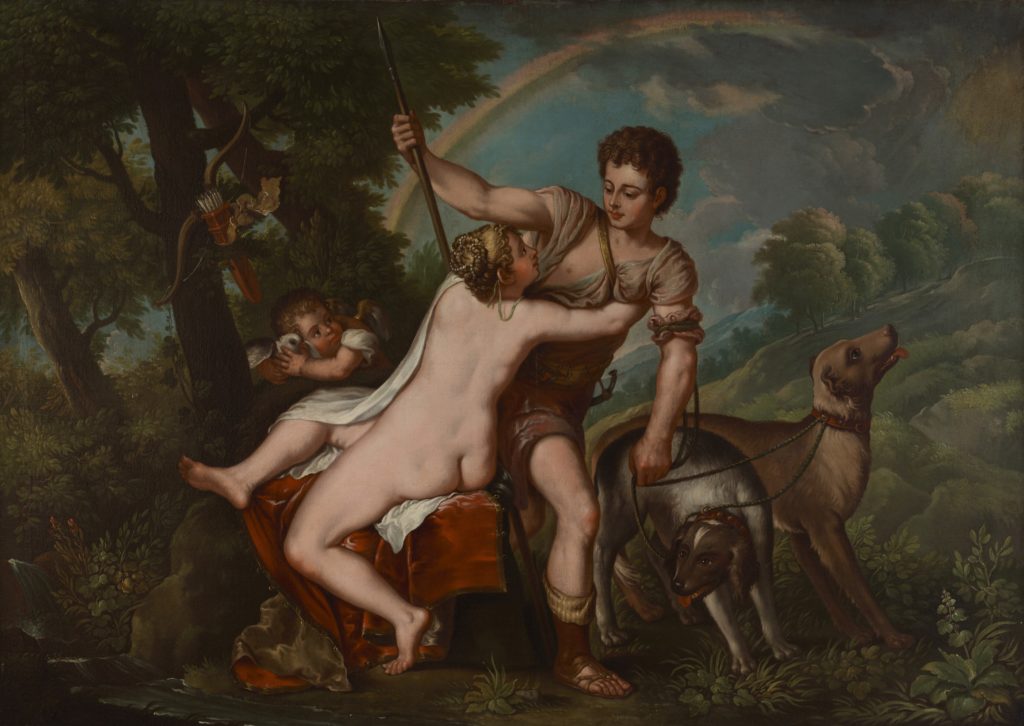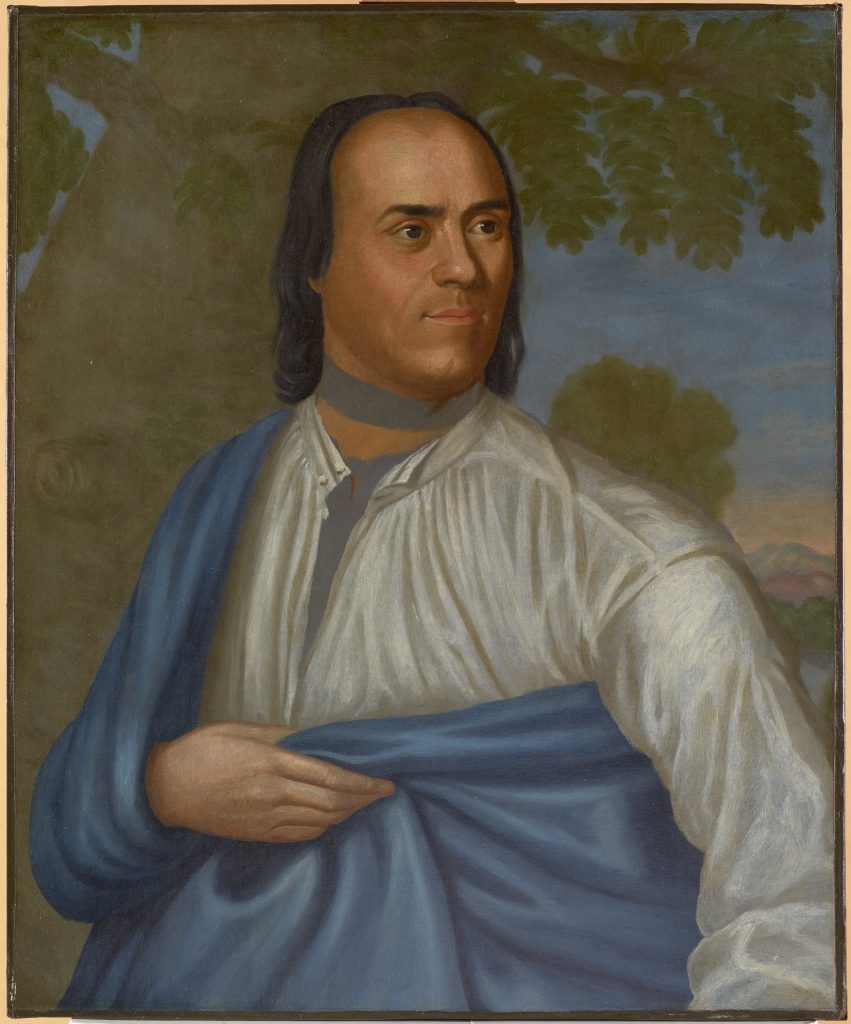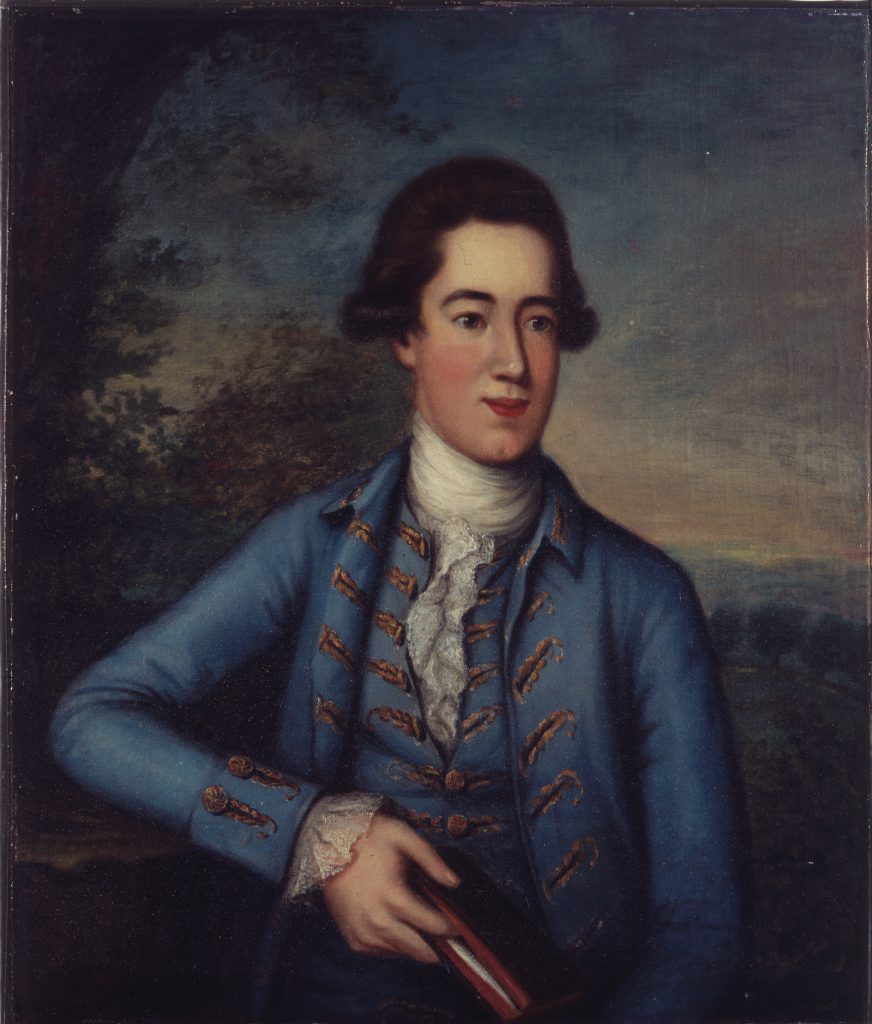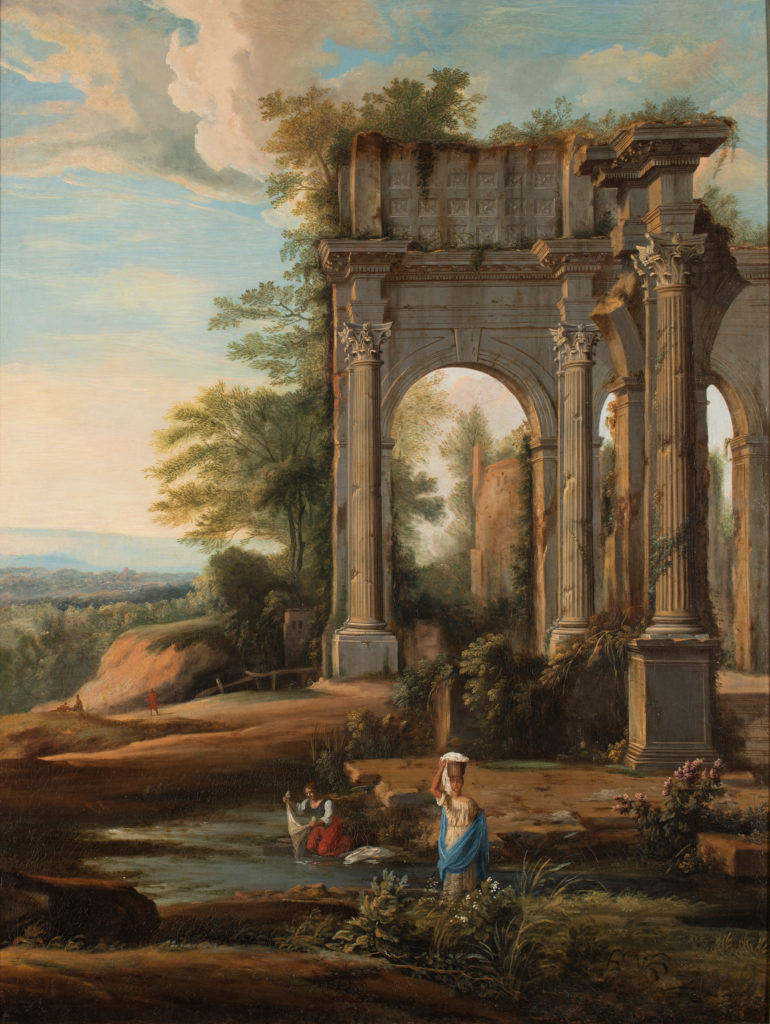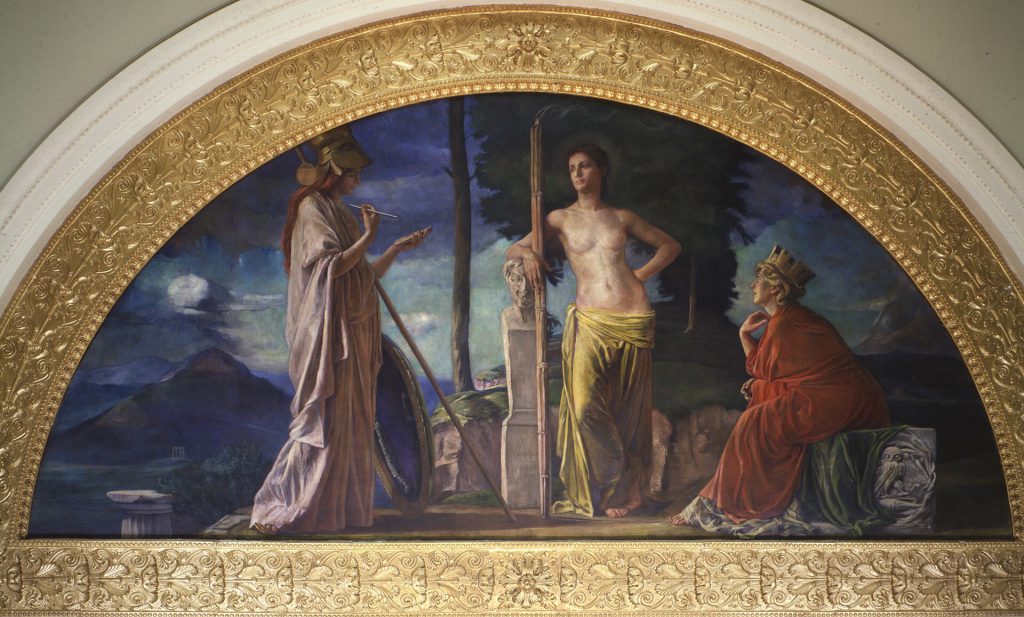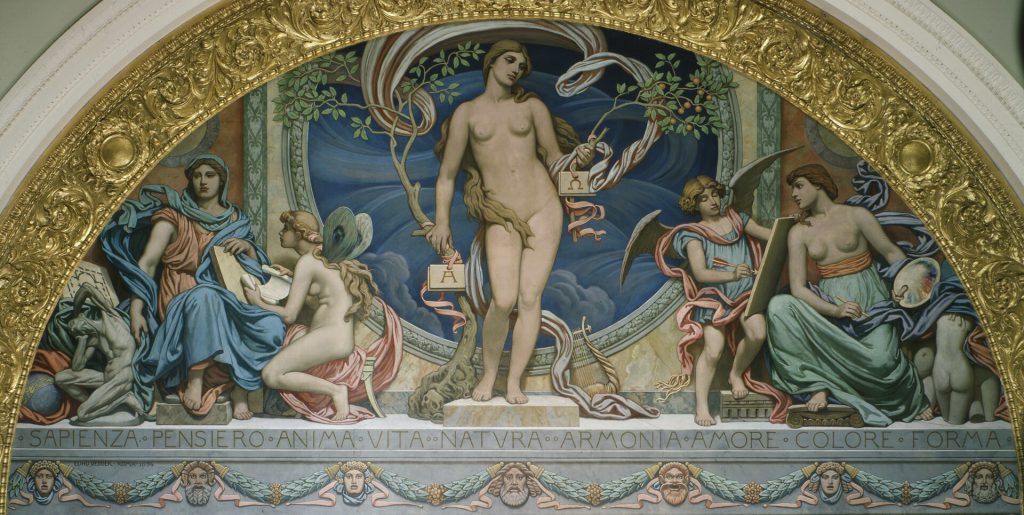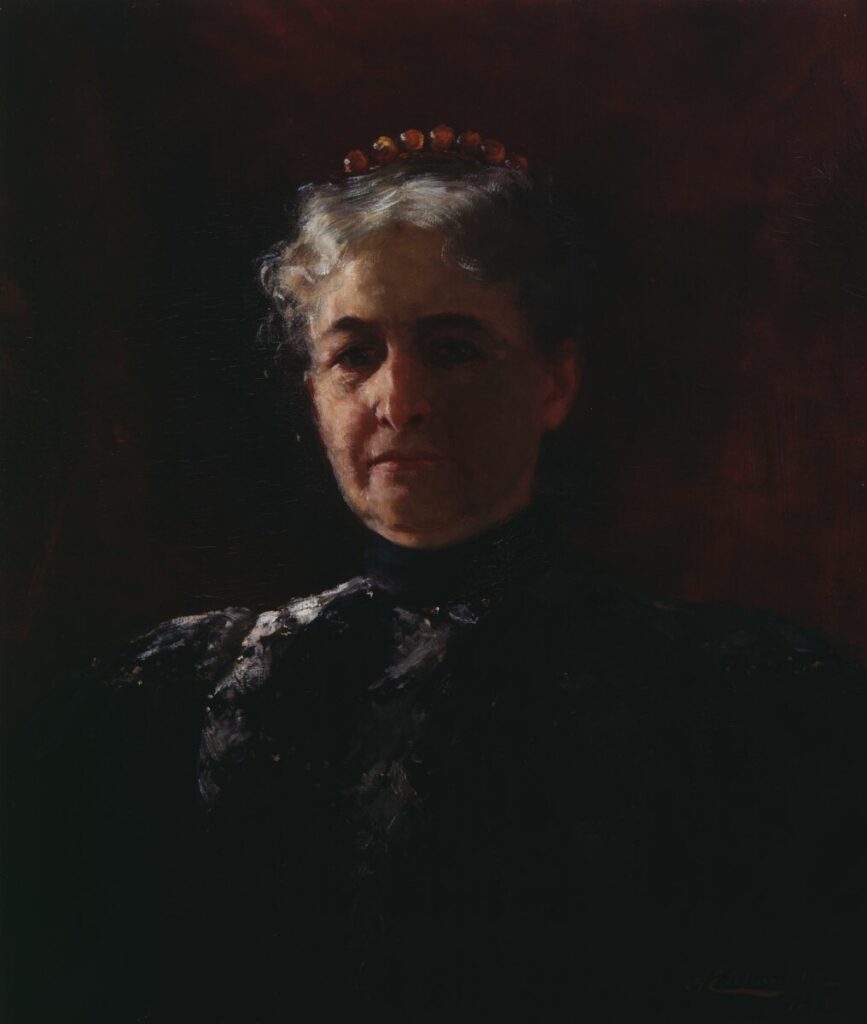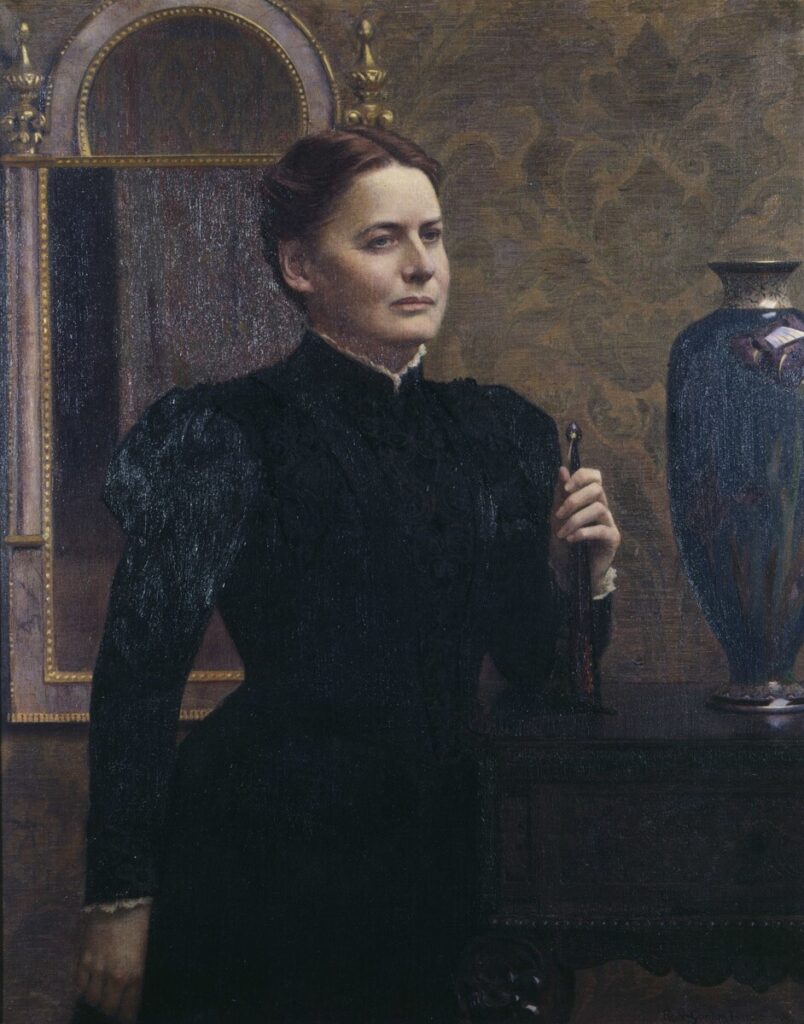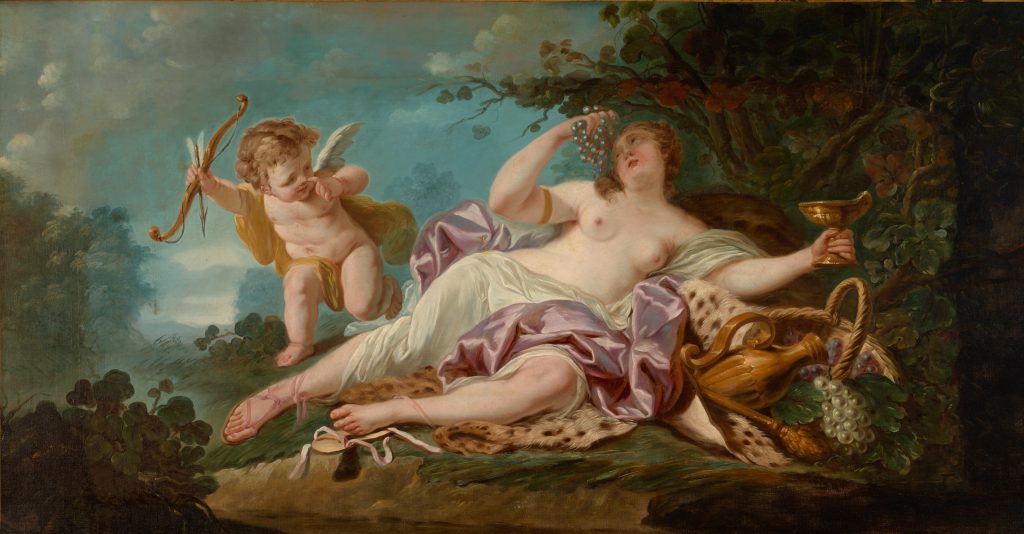The Arch of Titus
Loan from the Newark Museum of Art
This work by the American painter George Healy depicts famous author Henry Wadsworth Longfellow (1807–1882), Bowdoin Class of 1825, with his daughter Edith beneath the Arch of Titus in Rome. Dwarfed by its size, the author and his daughter stroll leisurely below the Arch, one of the most famous monuments in Rome, with the equally famed Colosseum in the background. The trip marked the author’s final visit to the countries that had shaped him in the years following his graduation from Bowdoin. The thriving colony of American expats alluded to in the circumstances of this painting is vividly captured by Longfellow’s Bowdoin classmate Nathaniel Hawthorne (1804–1864) in The Marble Faun (1860).
Here, in one giant canvas, Healy successfully marries the desire to capture the grandeur of ancient history embodied in the eternal city’s ruins and landscapes with the need to take on portrait commissions in order to make a living. Despite the allusion to plein air painting (painting outdoors) found in the group of artists in the foreground (long identified as Healy with his fellow American painters Frederic Church and Jervis McEntee), this is a carefully executed studio piece. During their European tour in 1868, the Longfellows visited Healy’s studio in Rome. There, the artist had a photograph of the author and his daughter created, which served as the basis of their portrait in this painting. Healy lived in Rome with his family for more than two decades at the end of the nineteenth century, during which time he became much sought after for his talent in portraiture. In its innovative approach to its dual subjects—the famed author and the eternal city—the work is truly one of Healy’s masterpieces.
